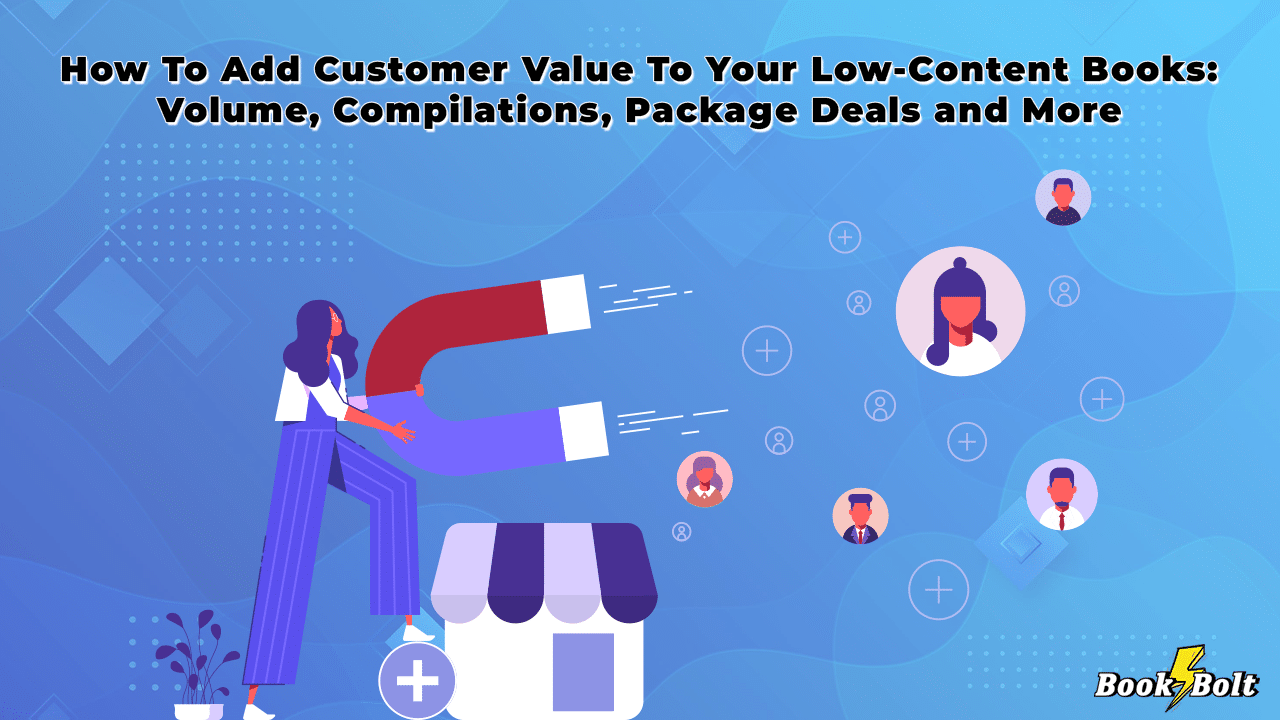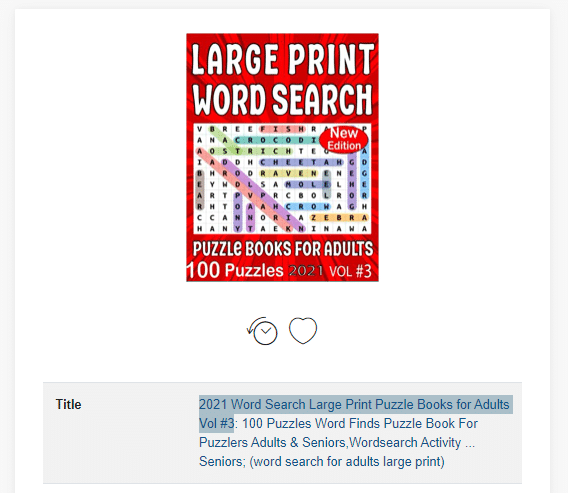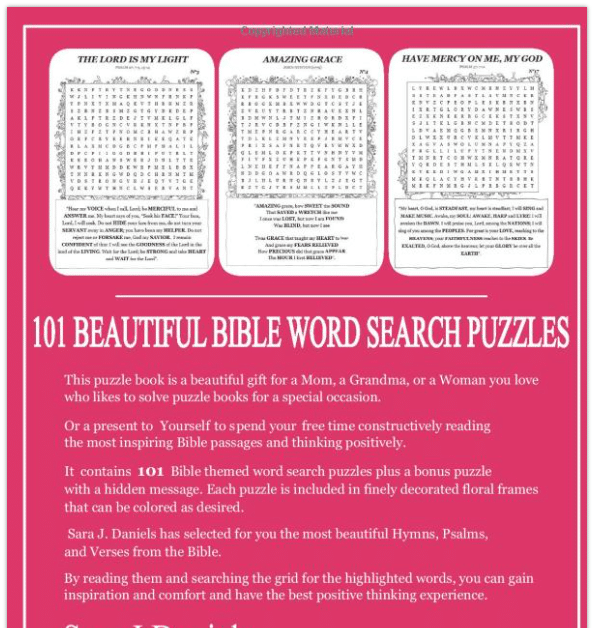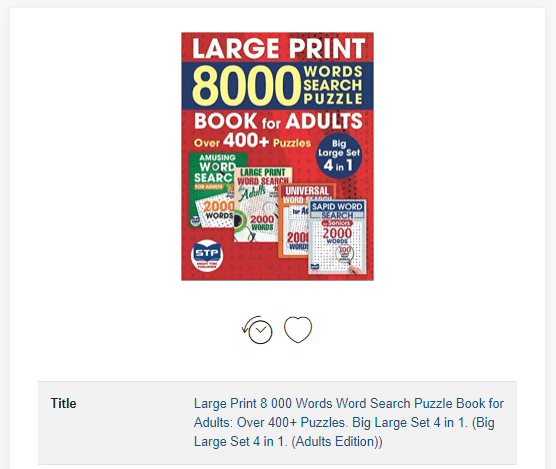
Low-content books on Amazon KDP are a popular and lucrative market to tap into as a Seller. There are diverse low-content book categories to choose from, the creation process is easy and the money-making potential is substantial. But, the truth is, that while creating outstanding low-content books is key to making sales, there’s something else that can help your sales numbers reach the sky – added value.
Customer value is essential for the purchase decision-making process. If you manage to convince potential buyers that your products will add extra value and will either change their experience, help them save money, or offer something else, they’ll be motivated to complete their purchase and buy your low-content books.
So what can you do to offer extra value to your customers?
Adding Value To Your Listings: The Extras You Should Know About
Sellers on Amazon KDP can use a number of different tactics to enhance their product listings and offer extras that can make their low-content books stand out from the rest. By offering additional customer value, you will be able to gain a competitive advantage and make your products more appealing to potential buyers.
So let’s dive into the extras that you can use to your advantage.
Low-content book bundles
Amazon offers Sellers the opportunity to sell their books in bundles or package deals. As a low-content book Seller, you can take advantage of this option and combine a number of products into one united offering. This is a win-win situation for both you and the buyer.
Why?
Because the consumer will be able to enjoy a variety of different low-content books with a single purchase, while you will have the opportunity to earn higher royalties by setting a higher price for the product.
This is an ideal strategy for Sellers who already have multiple low-content books listed on Amazon KDP. Your low-content book bundles can include several identical low-content book types or can be a mixture of puzzle books, planners, and activity books, for example.
Note: In order to do this you must already have 2 books published in a series.
Compilations
Compilations are another tempting way to attract buyers to your listing and encourage them to make a purchase. They provide added value to a product as they offer consumers diversity. The puzzle book category from low-content books is perhaps the best example of how compilations can be used.
Most best-sellers on Amazon KDP in the puzzle book space sell products with compilations of hundreds of different puzzles like word searches, sudoku, word scramble, and more. This rich diversity of options signifies that a lot of hours can be spent on a single product, eliminating the need to purchase other puzzle books to stay occupied.
This is a strong push for buyers which, in most cases, will lead to a decision to buy. Compilations are not limited to puzzle books. You can create compilations for coloring books, comic books, activity books, and more.
Series
Although series are usually associated with novels and books rich in content, they can also be exploited for low-content books like planners, puzzle books, and others.
Say you’ve decided to niche down your low-content books and create a word search centered around a popular theme. You can add extra value for your buyers by creating other low-content books with the same theme and announcing them as a series. Once you’ve attracted a buyer to one of the books from the series, they’ll be incited to search for the other parts to either collect all of them or continue enjoying their favorite theme with a second purchase.
There are a ton of ways to use series to motivate buyers to purchase more of your low-content books. Employ creativity and insights into your target audience to create the best series.
Themed cover & interior
If you’ve read any of our previous articles you’ll know that we put a high priority on niches. Choosing a specific niche or theme can help you stay competitive and offer something unique to your customers.
By centering your low-content books around a specific theme, like politics or sports, you can connect with potential buyers on a whole other level. When purchasing your product, consumers will receive both a high-quality low-content book and they’ll get to spend time with their favorite theme and feel part of a community, movement or trend.
Volume
Volume can also be a game-changer when it comes to low-content books. And by volume, we mean the actual size of the book. The recommended size of your book will depend on the low-content category. Keep in mind that book volume will also influence your costs and royalties. For example, books that are less than 108 pages receive higher royalties and don’t have any costs associated with them.
Also, think about user convenience. For instance, a planner is likely to be moved around a lot between home and the office. On the other hand, puzzle books are most likely to be enjoyed in a home setting, meaning they can be bigger and more voluminous.
How To Get Buyers To Notice The Added Value
Let’s say that you’ve already decided which types of extras you want to include to your product to make it more attractive to buyers. Where do you need to mention this added value so that it’s easy to see? How can you use it to grab attention?
Title
One of the most visible parts of your listing is the title. It’s what potential buyers will see immediately after they’ve looked at your book design image. The title can be utilized to inform about any added extra that users should know about.
For instance, if your book is part of a series, include something along the lines of “Book 2 of 4”. If it’s a compilation, use the title to describe that it consists of word searches, sudoku puzzles, cryptograms, or others. Your title, together with the subtitle, can be up to 200 characters. Use that to your advantage and describe the added value in your offering in as much detail as possible.
Description
Although the title is what predominantly grabs attention (along with an amazing cover, of course), you can also use the description part of your listing to explain what the extras in your low-content book are. Go into detail about the volume of the book, other books from your series (if there are any), what your book consists of, if it’s a compilation, and more. The information from your description is used by Amazon to determine if your products are suitable for specific searches.
For instance, if a buyer on Amazon searches for “puzzle book compilation”, mentioning that your low-content book is a puzzle book compilation in the description can help you become easily discoverable. This boosts your chances of generating a sale and gaining more popularity.
Keywords
This brings us to the next point – keywords. Keywords are vital for your rankings and using them wisely can make a significant difference in how visible your products are. There are a ton of value-related keywords that buyers are searching for on Amazon. Some of them may include “series”, “compilation”, “volume”, “large print”, and others. These keywords can be included in your listing titles and description.
They can also be used in paid advertising on Amazon, but we’ll cover this in a bit.
Series name field
If you’ve decided to create a low-content book series, take advantage of the Series information section when creating or editing your listing. Enter the name of the series in the provided section in the Series Name field. This will allow users to easily discover other books from the series. The series name will come up after the title of your book on your detail page.
Paid advertising
Another way to show users that you are truly providing extra value is by customizing your paid advertising campaigns on Amazon. Optimize your headlines and ad descriptions to include specific keywords or information related to the provided extras.
If you’ve already researched popular keywords that are relevant to your value-adding properties, use them in your paid advertising campaigns. This will increase your chances of reaching more buyers and showing them something that is hard to miss.
Integrating The Added Value In Your Listings
As important as added extras are for customer value, it’s not a coincidence that they’re referred to as “added value” or “extras”. They should be something added to an already amazing product listing, not the core itself. When adding customer value details in your listing, be careful not to jeopardize the fundamentals of the product.
What do we mean?
Mention the value-adding properties after you’ve successfully presented and described your low-content book in your listing.
For example, include this information after you’ve specified what type of low-content book you’re selling, who it’s targeted at, what it consists of, and if relevant, the theme that it’s centered around. This will enable you to keep the foundation of your listing strong and enhance it even further with specific extras that improve customer value.
How Will Offering Extras Benefit You As A Seller?
Providing additional customer value and extras for the low-content books that you sell on Amazon can help you make more profit and stay ahead of the pack.
Let’s look at a real-life example to prove our point.
We used Book Bolt to find the top Sellers from the puzzle book category of low-content books. The top-sellers are the products that have managed to climb up the mountain of competition to reach the top. They’re certainly doing something right and are creating attractive listings that buyers love.
We noticed that the majority of top-selling products are either part of a series, sold as a bundle, they’re compilations of numerous puzzles, and they have attractive designs that speak for themselves.
Let’s take the second best-seller from the category – the Large Print 8 000 Words Word Search Puzzle Book for Adults: Over 400+ Puzzles. Big Large Set 4 in 1. (Big Large Set 4 in 1. (Adults Edition)). Immediately from the title, we can get the following:
- It’s a large print (volume)
- 400+ puzzles (compilation)
- A 4 in 1 set (bundle)
The product sells for $14.99 when the average price in the category is $9.56. It also generates around 513 sales per month and has a BSR of 2,038.
What does this mean? That this listing is performing exceptionally well, it’s priced higher than the average in the category and is generating a substantial profit for the Seller. The puzzle book category is a competitive one to enter and without a doubt, the added value provided by this product is what makes the listing stand out from the rest.
Wrapping Up
Providing extra value with your low-content books will lead to increased interest in your products. This influences purchase decisions, ultimately improving your sales and Seller profit. Use business intelligence tools like Book Bolt to find out how other Sellers in your space are providing customer value and apply these ideas to your own offerings to outperform your competition.









